Saturday, December 13, 2003
AR antoninianus, Antioch, Gallienus, Göbl MIR 36, 1607b
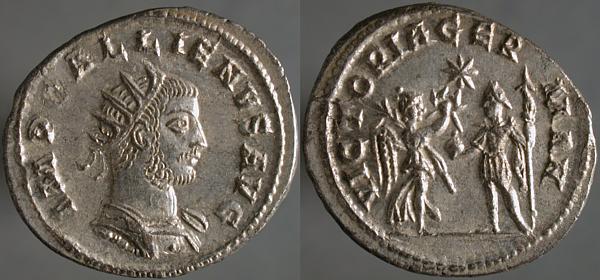
IMP GALLIENVS AVG, Radiate cuirassed bust right / VICTORIA GERMAN, Victory handing wreath to emperor who holds spear and globe. Star above.
An atypical-looking bust for Gallienus, Antioch seems to have stuggled with executing busts during the time this obverse legend was in use. I think this is what they were trying for.
Friday, December 12, 2003
Billon (stater?) 22mm, Bosporus Kingdom, 266-267 CE, SNG Cop 87
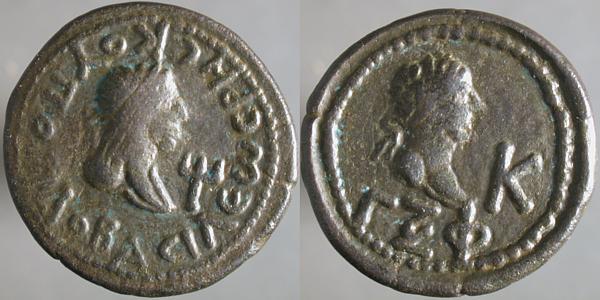
ΒΑCΙΛΕωC ΡΗCΚΟΥΠΟΡΙΛΟ, Diademed draped bust of Rheskuporis V (or VI?) right, trident before. / Laureate bust of Gallienus right, Κ before, ΓΞΦ (dynastic year 563 = 266-267 CE) beneath.
The Bosporus Kingdom was one of the client buffer states that Rome surrounded herself with.
Thursday, December 11, 2003
Æ sestertius, Rome, Valerian, Göbl MIR 36, 38g
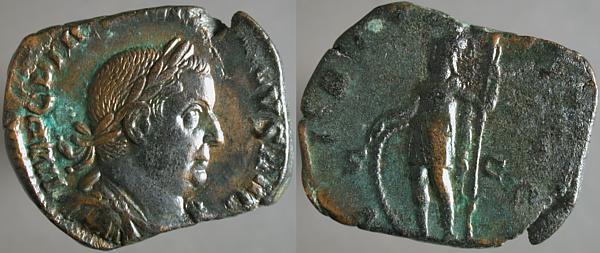
IMP C P LIC VALERIANVS AVG, Laureate draped cuirassed bust right / VIRTVS AVGG,Mars standing facing, head left, holding spear right and shield left. S_C across fields.
Compromise, compromise, compromise. Even as mid-3rd century sestertii go, this is an ugly shape. The bust of Valerian, however, is wonderfully realized and quite well preserved.
Wednesday, December 10, 2003
AR denarius, Rome, M. Sergius Silus, Sear (Millenium) 163, RSC Sergia 1
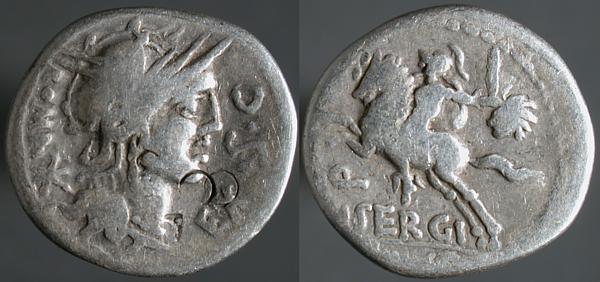
Helmeted head of Roma right, ROMA and XVI monogram behind, EX·S·C before / Horseman riding lt., holding a spear and the head of a barbarian. Q below horse, [M]·SERGI beneath, [SILVS] in exergue.
The reverse honors M. Sergio, grandfather of the issuing moneyor, said to have made an iron prosthesis after losing his right arm in the 2nd Punic War, and to have achieved great military success against the Gauls thereafter.
Tuesday, December 09, 2003
Æ23 Thessalian Koinon, Gallienus, SNG Cop 355
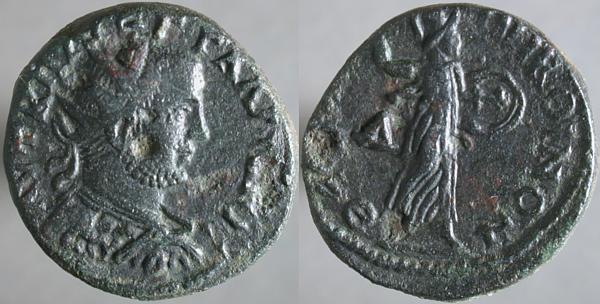
Thessalian Koinon
ΑΥΤ Κ Π Λ ΓΑΛΛΝΟVC, Radiate cuirassed bust right / ΘΕCCΑΛΩΝ ΚΟΙΝΟΝ, Athena, with aegis and spear, advancing right. Δ behind.
The koinon was an association or league of a group of Greek cities, usually each near the others. Koinons continued to exist after the Hellenistic Greece came under Roman control (in this case, centuries after.) In classical times, Koinons provided military benefits, afterwards there were presumably still economic and cultural benefits.
Update: May 28, 2005 - Corrected order of words in reverse legend.
Monday, December 08, 2003
Two can play
Silvered Æ antoninianus, Rome, Gallienus, Göbl MIR 36, 570c
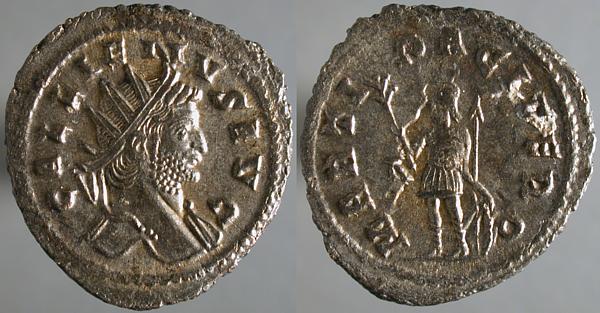
GALLIENVS AVG, Radiate head with slight drapery on both shoulders right (Göbl does not attest this bust for this reverse) / MARTI PACIFERO, Mars standing facing, head left, holding branch left and spear right, leaning on shield right. A in left field.
Mars the peacemaker. Note that an incuse image of the obverse, inverted, is visible on the reverse, particularly to the left of Mars, the result of the dies having been struck when no blank was in place. If an obverse die was destroyed in that accident, perhaps one not intended for this reverse was substituted without the discrepancy being noticed.
Sunday, December 07, 2003
Æ27, Serdica in Thrace, Gallienus, Moushmov 4960
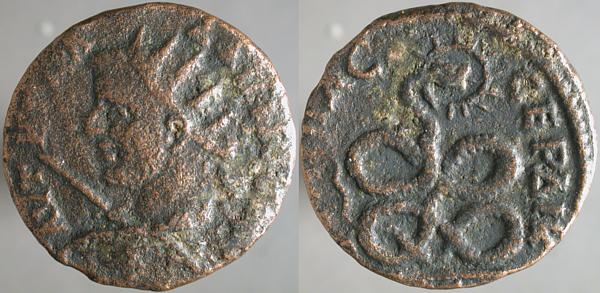
ΑVΤ ΓΑΛ_ΛΙΗΝ[...], Radiate cuirassed bust, with spear and shield, left / ΟVΛΠΙΑC CΕΡΔΙΚ, Coiled snake with radiate head.
Perhaps another medical theme, snakes were associated with Asclepius and Hygeia (Salus).

